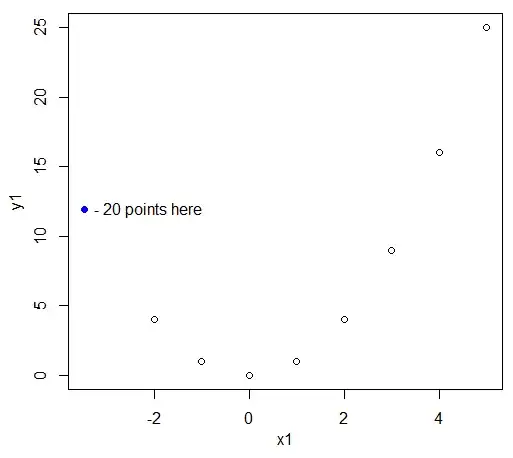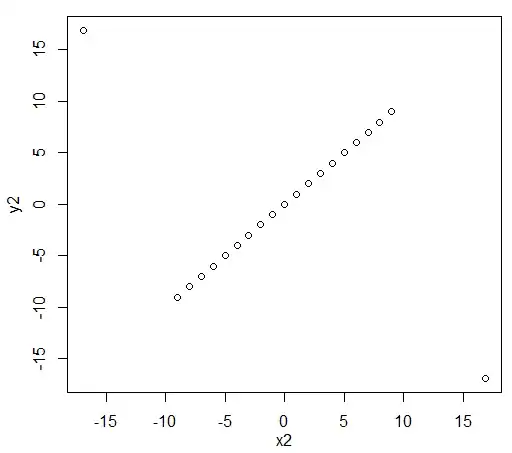Neither correlation being zero necessarily tells you much about the other, since they 'weight' the data - especially extreme data - quite differently. I am just going to play with samples, but similar examples could be constructed with bivariate distributions / copulas.
1. Spearman correlation 0 doesn't imply Pearson correlation 0:
As mentioned in the question, there are examples in the comments, but the basic structure is "construct a case where Spearman correlation is 0, then take an extreme point and make it more extreme without changing the Spearman correlation"
The examples in comments cover that very well, but I am just going to play with a more 'random' example here. So consider this data (in R), which by construction has both Spearman and Pearson correlation 0:
x=c(0.660527211673069, 0.853446087136149, -0.00673848667511427,
-0.730570343152498, 0.0519171047989013, 0.00190761493801791,
-0.72628058443299, 2.4453231076856, -0.918072410495674, -0.364060229489348,
-0.520696233492491, 0.659907250608776)
y=c(-0.0214697990371976, 0.255615059485107, 1.10561181413232, 0.572216886959267,
-0.929089680725018, 0.530329993414123, -0.219422799586819, -0.425186120279194,
-0.848952532832652, 0.859700836483046, -0.00836246690850083,
1.43806947831794)
cor(x,y);cor(x,y,method="sp")
[1] 1.523681e-18
[1] 0
Now add 1000 to y[12] and subtract 0.6 from x[9]; the Spearman correlation is unchanged but the Pearson correlation is now 0.1841:
ya=y
ya[12]=ya[12]+1000
xa=x
xa[9]=xa[9]-.6
cor(xa,ya);cor(xa,ya,method="sp")
[1] 0.1841168
[1] 0
(If you want strong significance on that Pearson correlation, just replicate the entire sample several times.)
2. Pearson correlation 0 doesn't imply Spearman correlation 0:
Here's two examples with zero Pearson correlation but nonzero Spearman correlation (and again, if you want strong significance on these Spearman correlations, just replicate the entire sample several times).
Example 1:
x1=c(rep(-3.4566679074320789866,20),-2:5)
y1=x1*x1
cor(x1,y1);cor(x1,y1,method="spe")
[1] -8.007297e-17
[1] -0.3512699

Example 2:
k=16.881943016134132
x2=c(-9:9,-k,k)
y2=c(-9:9,k,-k)
cor(x2,y2);cor(x2,y2,method="spe")
[1] -9.154471e-17
[1] 0.4805195

In this last example, the Spearman correlation can be made stronger by adding more points on y=x while making the two points at the top left and bottom right more extreme to maintain the Pearson correlation at 0.

